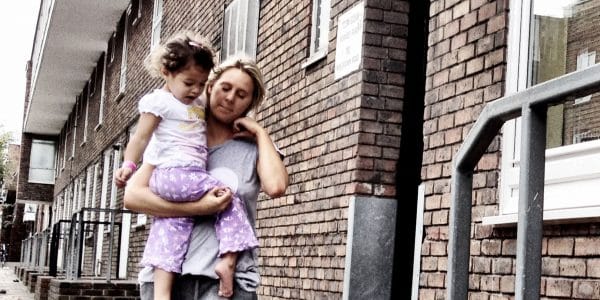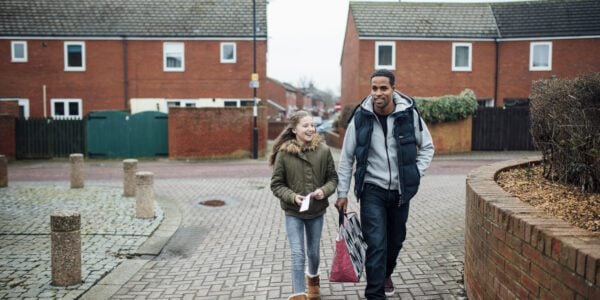
29/06/21
2 min read
Today’s second-generation ethnic minority adults, who were born and brought up in the UK, did much better in the education system than the white majority despite much less advantaged economic backgrounds. This was true, though differentially so, for all the main minority groups. It contrasts with the experience of most ethnic minorities in other European countries.
This educational success does not, however, translate fully into success in the labour market. After leaving education, second-generation ethnic minority adults are less likely to be employed, and some ethnic groups are less likely to reach managerial/professional occupations, than the white majority.
A new report published as part of the IFS Deaton Review of Inequalities, funded by the Nuffield Foundation, illustrates the complexities involved in understanding ethnic inequalities. It is not the case that the labour market deficits people from ethnic minorities face are simply explained by their less advantaged family backgrounds. Those same backgrounds do not hold them back in the education system. Nor do we have a full understanding of why they are so successful educationally.
The research uses linked Census data covering a 40-year period to track outcomes across generations within families. It focuses on second-generation British minority ethnic groups – those whose parents were born abroad and moved to the UK as adults – and on the British Indian, Pakistani, Bangladeshi and Black Caribbean ethnic groups who are represented in sufficient numbers for analysis and who are sufficiently long-standing in the UK that the second generations can be tracked well into adulthood. These comprise the majority of the UK’s second-generation adult ethnic minorities.
We find a picture that is varied and complex but one that policymakers must grasp if they are to develop policies aimed at tackling inequalities. Key findings include:
Second-generation ethnic minority adults are much more likely to come from more disadvantaged social class origins, as measured by whether their parents were in professional or managerial occupations, compared with the white majority. Only 16% of Indian, 7% of Pakistani, 5% of Bangladeshi and 14% of Black Caribbean second-generation ethnic minorities who had reached adulthood by 2011 came from such advantaged origins, compared with 29% of White British people.
Despite poorer family backgrounds on average, second-generation ethnic minorities are substantially more likely to achieve high educational qualifications than the white majority. For example, over 50% of British Indians and 35% of British Pakistanis and Bangladeshis have tertiary (degree-level or equivalent) qualifications, compared with 26% of the White majority. This may, at least in part, be because their ethnic minority parents are not comparable to white British parents of the same occupational class.
The ‘occupational downgrading’ that immigrants often experience when moving to another country implies that those who arrive with significant skills or cultural/social resources may nevertheless end up in similar occupations to White British people without those resources. Nevertheless, the ability of the UK’s second-generation ethnic minorities to succeed in education despite more disadvantaged social origins is distinctive by comparison with other European countries.
And yet, when we look at the labour market, the position of ethnic minorities does not match what we might expect given the typical rewards associated with education. British Pakistani, Bangladeshi and Black Caribbean second-generation men and women are all more likely to be highly educated than their white majority counterparts. Yet they are less likely to be employed in each case. Their chances of attaining professional or managerial occupations are similar to those of their White British counterparts, but lag behind what we might expect given their educational success.
The experiences of people from ethnic minorities who have grown up in the UK are different and complex. We should celebrate their remarkable success in education, but ask hard questions about why this does not translate into equal success in the world of work. Attempts to oversimplify by putting poorer labour market performance down solely to less advantaged backgrounds on the one hand, or discrimination on the other, fail to recognise that both are relevant. To devise effective strategies for addressing ethnic inequalities in the UK, we need to not only improve opportunities for social mobility more generally, but also ensure that hard-won qualifications can be translated into success in work.Lucinda Platt, Professor at the LSE, a member of the panel overseeing the IFS Deaton Review of Inequalities, and an author of the report.
Whilst a large proportion of people from second-generation minority ethnic backgrounds have achieved high-level academic qualifications, the fact that this has not translated directly into earnings outcomes raises important questions about how the education system and the labour market relate both to each other and to people’s family background and ethnicity. Policies designed to improve social mobility and address discrimination should be informed by understanding of how class, ethnicity and gender intersect throughout people’s lives to affect labour market success.Mark Franks, Director of Welfare, Nuffield Foundation
















































